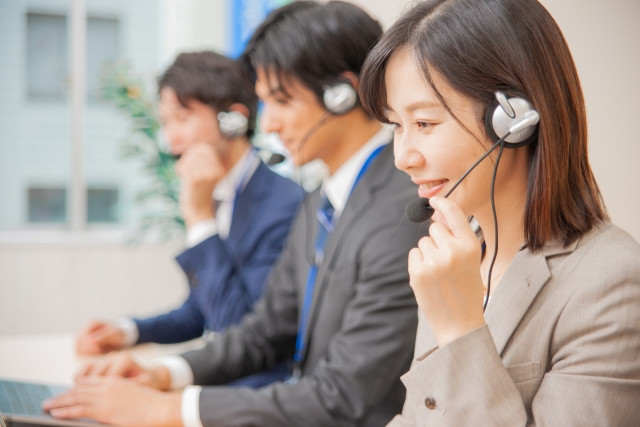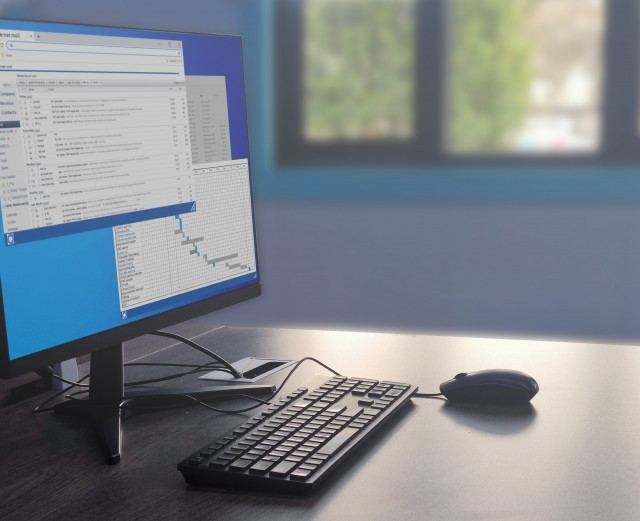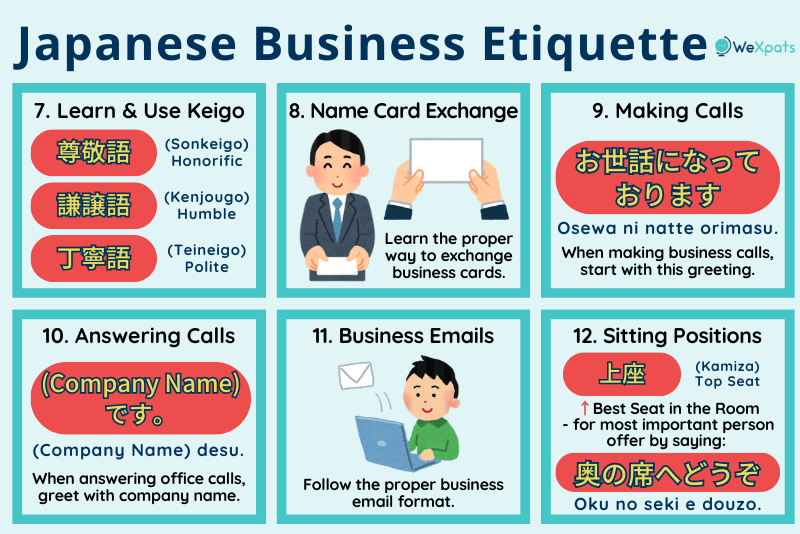Practising proper Japanese business etiquette is important for smooth business and workplace communication. IN this article, we introduce Japanese business etiquette you need to know. From what is appropriate business attire in Japan, how to address people, how to exchange business cards, and more.
First Published: 2022/06/17
Updated: 2024/04/22
Table of Contents
- Addressing Others
- Referring to Yourself
- Greeting Colleagues When Going to Work
- Excusing Yourself When Leaving Work
- Dressing to Company Standards
- Being Punctual
- Learning and Using Proper Keigo
- Exchanging Business Cards
- Making Business Calls
- Answering Business Calls
- Writing Japanese Business Emails
- Knowing Where to Sit
Business etiquette is acceptable social behaviour or manners when at a workplace, including appropriate conduct with superiors, colleagues, clients, and business partners. Upholding proper business manners is essential to making a good impression, improving workplace relationships, and improving the company’s image.
There are many ways to learn Japanese business etiquette and manners - studying books, watching videos, attending seminars, or just by observing your boss and seniors throughout the work week.
Not sure what a typical Japanese work week is like? Read about working hours in Japan during a typical Japanese work week.
Below, we will introduce basic Japanese business etiquette as well as the correct Japanese etiquette to uphold when handling business operations.

 Are you having any issues with job-hunting in Japan?
Are you having any issues with job-hunting in Japan?
1. Addressing Others
Japanese names are structured differently from Western names with the family name followed by the given name. So what exactly is the appropriate way to address someone in the office, whether it’s your boss, colleague, or client?
In Japan, part of Japanese business etiquette is addressing superiors by their respective job titles & company positions. For example, referring or addressing the company president as 社長 (shachou) or department chief as 部長 (buchou).
Some companies prefer to avoid stuffy titles and just add the suffix ~さん (-san) to the end of a colleague’s or superior’s family name.
💼 Learn Business Japanese (Job Titles and Positions) Part of Japanese work manners and etiquette is addressing...
Posted by WeXpats on Friday, June 16, 2023
Writer's Pick
2. Referring to Yourself

There are many ways to refer to yourself in Japanese, for example 僕 (boku), 俺 (ore), and 私 (watashi). For professional business settings, using “boku” and “ore” is inappropriate, use 私 (watakushi) instead which is the most formal. “Watashi” is acceptable to a certain extent at workplaces when talking to colleagues.
3. Greeting Colleagues When Arriving at Work

It is basic Japanese business etiquette to greet colleagues when arriving at work and when leaving work. It builds camaraderie which is important in Japanese work culture.
Regardless of the time of day, whether evening or night, when you arrive at work, greet your colleagues with:
「おはようございます」
(ohayou gozaimasu)
- Good morning.
You may find it strange to greet someone with “Good morning” when it’s night time, but the logic is that you’re starting work now which makes that time the start of your day.
4. Excusing Yourself When Leaving Work

If you are leaving first, before others, say:
「お先に失礼します」
(osaki ni shitsureshimasu)
- Excuse me for leaving first.
In return, colleagues will say to you:
「お疲れ様でした」
(otsukaresamadeshita)
- Good work today. / Thanks for your hard work.
You should say “Otsukaresamadeshita” to colleagues who are leaving first too.
5. Dressing to Company Standards

As much as we like to say “don’t judge a book by its cover”, first impressions are usually based on one’s appearance, which is why how you dress is so important.
The standard business attire in Japan is a suit of course; this applies to both men and women. This is the same attire for attending job interviews in Japan. Men are required to wear suits and a tie, if working in the office the tie may be a colourful patterned one, but a solid-coloured tie is recommended for important business meetings and job interviews. Women may wear knee-length skirts, stockings if worn should be skin coloured, and make-up or nails should be simple and not gaudy.
When getting ready for work, ask yourself these questions:
- Are your clothes and makeup too flashy?
- Are your clothes wrinkled or dirty?
- Is your hair messy?
- Are your fingernails long or dirty?
- Did you put on too much perfume?
- Did you put on deodorant?

Of course, what you wear also depends on your workplace. Recently, there are quite a few companies that allow business casual or even full-on casual wear - casual clothes, dyeing of fun hair colours and long painted nails. However, there are still some rules to adhere to, such as not wearing overly-revealing clothing or too short skirts / shorts. And, if your company assigns uniforms, of course wear that.
6. Being Punctual

Punctuality is a big deal in Japan. Many companies and employers are strict with employees arriving to work on time and even train stations issue Certificate of Delay (遅延証明書 chien shoumeishou) whenever trains are late. Most Japanese companies require this paper slip as evidence that your lack of punctuality was no fault of your own, though there are some companies that consider you late regardless.
If you were late due to your own fault, for example forgetting to set your alarm or oversleeping, some companies may require you to submit a written apology called 始末書 (shimatsusho).
So what do you do if you’re late? Bow and apologise. Here's how:
Sorry I'm Late: The Japanese Attention to Punctuality
[Repost] : There is a notable increase in train delays and suspensions in Japan, especially Tokyo lately. Perhaps...
Posted by WeXpats on Tuesday, July 11, 2023
7. Learning and Using Proper Keigo

敬語 (Keigo) is Japanese honorific speech or honorific language. In Japan, it is important and good business etiquette to hold a conversation using Keigo. Keigo consists of 3 levels of politeness:
尊敬語 (Sonkeigo) - Honorific Language
When speaking to superior, client, customer, etc. important people.
謙譲語 (Kenjougo) - Humble Language
Also known as 謙遜語 (kensongo) is used to lower or humble your own actions as a sign of respect to someone else. Many Japanese learners find it difficult to distinguish them from Sonkeigo. The key is to identify who is performing the action - Sonkeigo if an important person is performing an action, Kenjougo if you are performing an action.
丁寧語 (Teineigo) - Polite Language
Used regardless of relationship or superiority. The regular ~です (-desu) / ~ます (-masu) form of Japanese usually taught in beginner Japanese classes and textbooks.
Examples of Keigo in everyday conversations in Japanese can be found here - useful for workplace and business interactions.
8. Exchanging Business Cards

Exchanging business cards in Japan is a whole section in Japanese business etiquette training itself. Where and how to stand, who to give the card to first, how to hold the card, how to receive the card, what to do after receiving the card, and what not to do. There are even training courses offered to teach the proper way to exchange business cards.
Read how to professionally exchange business cards in Japan.
NOTE: Sometimes you will receive 2 cards; one is a business card, the other is the person’s name card.
9. Making Business Calls

When making calls, avoid calling at times that will inconvenience the other side and during lunch break hours. Always speak clearly and politely.
When making a call, start with a greeting of 「お世話になっております。(osewa ni natte orimasu)」, followed by your company name, personal name, and a clear description of why you are calling.
10. Answering Business Calls

When answering a call, try to pick up within 3 rings of the phone. Do not answer the phone with 「もしもし (moshi moshi)」as this is considered casual, instead greet with your company name, a simple「(Company Name)です。(〇〇 desu)」will do. Listen to what the other side has to say. If the person they are looking for is not available, ask if they would like their call returned:
「折り返しお電話いたしましょうか」
(orikaeshi o-denwa itashimashouka)
- Would you like [us] to call you back?
If the other side says yes, note down their name, contact information (if you don’t already have it), and issue. Follow-up with whomever they are looking for as soon as possible.
11. Writing Japanese Business Emails

Japanese business emails are generally a lot wordier than English business emails. A typical business email format contains:
- Addressing the Receiver
- Greeting
- Sender Self-Introduction
- Abstract
- Body
- Closing Greeting
- Sender Information
Formatting is quite clean and clear when it comes to options like dates for meetings but all in all it takes quite some time to get to the point.
12. Knowing Where to Sit

上座 (Kamiza) meaning “top seat” and 下座 (Shimoza) meaning “bottom seat” is Japanese seating etiquette that indicates ranking/position/supremacy depending on where you sit. It applies to all situations involving sitting - in meetings, in vehicles (cars and even planes), in restaurants, and more. It also applies to elevators.
- 上座 / kamiza / top seat : the best seat in the room, the calmest innermost seat in the room, the seat with the best view
- 下座 / shimoza / bottom seat : the seat nearest to the entrance of the room
In Japanese business etiquette, the most important person (boss or customer) will be guided to the Kamiza. For example, during a meeting with a client, the client will be offered the top seat like so:
「奥の席へどうぞ」
(oku no seki e douzo)
- Please have the seat at the back.
Find a Job in Japan with WeXpats

WeXpats operates a service for foreign nationals who want to work in Japan. There are jobs in a variety of industries. There are 2 services available on WeXpats - WeXpats Agent for full time jobs and WeXpats Jobs for part time jobs.
Looking for a Full Time Position? Leave it to WeXpats Agent!
WeXpats Agent is a career support service that specialises in employment for foreign nationals living in Japan.
Recruitment agencies in Japan are a service where dedicated career advisors will assist you with your job hunt for free. In addition to introducing open positions, we also provide support to help you create your Japanese resume and practice for interviews. Worried about job hunting in Japanese? We are here for you.
Features of WeXpats Agent
-
We have many job openings that are a good fit for foreign nationals to work in, such as translation, interpretation, inbound, etc. jobs that make use of your language skills, as well as engineering etc. jobs that do not require Japanese skills.
-
Our career advisors support and help you prepare your resume and practice job interviews with you. Clearly communicate your strengths to the hiring company.
-
We will handle communication with companies on your behalf, such as arranging interview dates and negotiating conditions. And thereby reducing your stress and time spent.
Finding a Part Time Job? Browse on WeXpats Jobs!

WeXpats Jobs is a part time job site for foreign nationals living in Japan. You can search for jobs in 11 languages (English, Vietnamese, Korean, Indonesian, Traditional Chinese, Simplified Chinese, Burmese, Thai, Spanish, Portuguese), including Japanese. Find jobs that suit you by specifying your Japanese language level, occupation, location, and etc.
※ You can register from outside Japan, but only those living in Japan can apply for jobs.



































